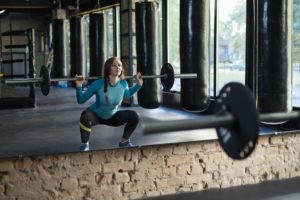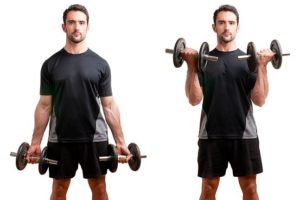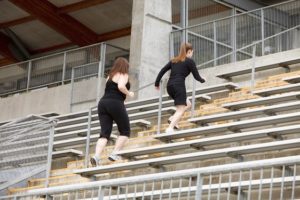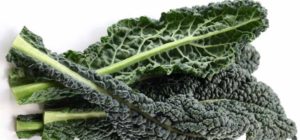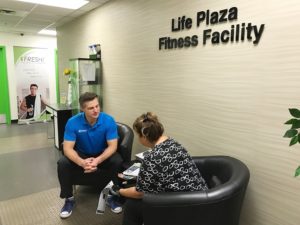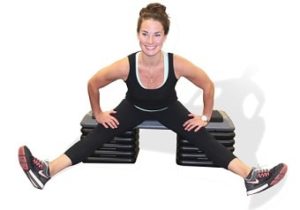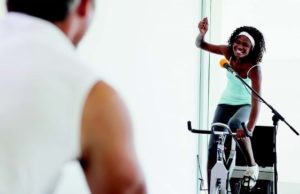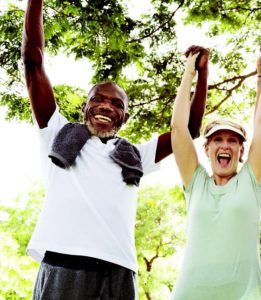Consumer EducationShare With Clients
A Team Approach to Wellness
Lisa Dougherty is the founder of the Medical Fitness Network (MFN). This mostly volunteer‐driven project is supported by more than 100 national businesses. Dougherty's vision is to improve the quality of lives of many millions of people by connecting them with fitness and allied health professionals who have a background in the prevention, treatment and rehabilitation of chronic diseases, medical conditions and disabilities, as well as in the management of women's health issues, including prenatal and postpartum care.
The Joy of Movement Rings True
There's nothing like post–knee surgery downtime to catch up on my IDEA Fitness Journal reading. The February 2017 issue is just chock‐a‐block full of delectable goodness. In particular, I enjoyed Ryan Halvorson's article "Embracing the Joy of Movement" and Kelly McGonigal's "Ready to Love Your Stress?" Even after 38 years as a fitness pro, I learn something every issue to help me improve as a group fitness leader and baby boomer specialist. Both articles made their points logically, succinctly and persuasively.
When Students Grieve
Death is not the greatest loss in life. The greatest loss is what dies inside us when we live.
—Norman Cousins
Sooner or later, most of us will lose someone we care about. The pain this causes can be overwhelming, and we may feel that nothing will ever be normal again. Losing someone we love is a highly personal experience, and no two people cope in the same way or progress within the same time frame. There is no right or wrong way to grieve.
Comparing Periodization Strategies for Women
Study reviewed: Bartolomei, S., et al. 2015. Block vs. weekly undulating periodized resistance training programs in women. Journal of Strength and Conditioning Research, 29 (10), 2679—87.
If your clientele includes women looking to boost their muscular strength within a specific time frame, creating periodized weight–training programs for them is a great idea. The question is: How should you structure the program? Bartolomei and colleagues' study published in 2015 offers guidance on two possibilities.
Resistance Training and the Cardiorespiratory Response
We know that resistance training improves strength, but can it also challenge the cardiorespiratory system? In a study published in The Journal of Strength & Conditioning Research (2017; 31[3], 644—52), researchers analyzed the effects of three exercises performed three different ways, to determine the cardiorespiratory response to each.
Brief Bouts of Stair Climbing Boost Fitness Levels
Lack of time and no access to fitness equipment are two of the most common responses given by people who do not exercise. Researchers at McMaster University and Queens University, in Ontario, have released a report suggesting a workaround to those responses. The scientists have found that very short bouts of stair climbing can help people get in better shape.
The Foundation of a Fulfilling Future
Las Vegas has a reputation for secrets. As they say, "What happens in Vegas stays in Vegas." This July, more than 10,000 professionals will break that cardinal rule because what happens at the 2017 IDEA World Convention will be shared with millions of people worldwide. With more than 335 workshops, lectures and workouts, plus tons of special events planned to celebrate IDEA's 35th anniversary, it will be impossible to keep quiet about the career-changing experiences and top-level knowledge offered at this year's event.
Gym Memberships Pay Off
Many people who want to join gyms are skeptical that it will actually help them reach their fitness goals. A new study from Iowa State University may assuage those doubts—and help gyms to convert more browsers into buyers. According to the research, published in PLOS ONE (2017; http://dx.doi.org/10.1371/jour
nal.pone.0170471), gym members tend to have significantly higher levels of strength and cardiorespiratory fitness and are generally more active than nonmembers.
Getting the Facts on Fatigue
Fatigue is a crucial concept for exercisers because it represents the point where they fail to complete a set or feel too exhausted to continue a long-distance run or other endeavor. Fatigue fascinates researchers because it reflects mental, chemical and mechanical processes that affect muscle performance. Indeed, the physiology of fatigue recently inspired the journal Medicine & Science in Sports & Exercise to devote a special section to the topic.
I'll review highlights from the journal's special section in a question-and-answer format:
Taming Testosterone Troubles
Men: Have you had difficulty getting out of bed in the morning, or are you suffering from low mood or libido? Have you gained body fat, lost muscle or begun to struggle with depression or lack of motivation? Low testosterone levels may be to blame.
IDEA Food and Nutrition Tips Hits the Mark on Plant Power
The latest issue of IDEA Food and Nutrition Tips (November—December 2016) is one many of us have been waiting for! The recognition of plant–based nutrition is revolutionary for the fitness industry. The past couple of decades have led us to the world of animal protein—and lots of it. The message has been that athletes and very active people need "quality" protein, meaning "animal products."
Shari Greenberg
Health Coach
Chicago
The Other 165 Hours
Things aren't always what they seem. Tim Borys, president and CEO of FRESH! Wellness Group, has a simple philosophy when it comes to coaching clients toward self–improvement. He believes that "outer circumstances rarely change until [the client's] inner voice and mindset are transformed," he says. However, too often, indviduals who seek guidance from a personal trainer emphasize external actions—like performing well during training sessions—as the primary roads to change, he adds.
Celebrating 35 Years of Inspiring the World to Fitness
Since its inception in 1982, IDEA Health & Fitness Association has aimed to build a community of like‐minded professionals who are the driving force behind greater health and wellness worldwide.
5 Common Athletic-Performance Supplements: What’s the Evidence?
The nutritional–supplements industry brought in $32 billion in 2012, and sales are estimated to nearly double—to $60 billion—by 2021 (Lariviere 2013). This comes as no surprise to anyone who has walked into a supplement store to find walls lined with everything from multivitamins and fish oil pills to preworkout formulas and protein powders.
A Look at Meditation
Ezra Bayda and Elizabeth Hamilton, husband and wife, have been practicing Zen meditation for over 40 years and have taught for the last 20 at the Zen Center of San Diego. They lead retreats across the United States and in Australia and France and have led meditation in hospice venues and a retirement community. Katherine Watson, executive managing editor of IDEA Fitness Journal, interviewed them about the rising interest in meditation.
On-Demand and App-Based Training: Getting Clients via Smartphone
The on–demand economy—featuring Uber–style personal fitness training—is here. While app platforms vary in structure and locale, they share a common thread: on–demand connection with fitness experts.
On–demand mobile commerce attracts more than 22.4 million consumers and $57.6 billion in spending annually, with $8.1 billion going to health and beauty services that include fitness training, Harvard Business Review reported in April 2016.
To Help Clients Succeed, Keep Change Simple
Samuel L. Berry, MS, is a Master Trainer for the American Council on Exercise and for Functional Movement Systems. He serves a wide range of clients and athletes aged 11—81 who are working toward a variety of objectives. In addition to his roles as a trainer and educator, he has contributed to publications for Harvard Medical School, Encyclopedia of Sports Medicine, PTontheNet.com and prominent peer–reviewed publications such as The Journal of Pediatrics.
Flexibility Plus
Stretching has become a controversial topic, and some research questions its efficacy. You may have wondered whether you should include stretches in your cooldowns. As a general rule of thumb, if it's weak, strengthen it; if it's sore, rub it; if it's locked, unlock it; and if it's tight, stretch it. This works in theory, but we don't know exactly what's going on with our participants' bodies. What we do know is that most people want to move more freely and with less pain.
The Group Fitness Trifecta
Measure your progress with a three-pronged approach to metrics.
Aging and Cardiovascular Disease: Exercise to the Rescue!
Our species is long–lived compared with other primates. Chimpanzees, for instance, have a life expectancy of about 13 years versus 78.5 years for U.S. babies born in 2009 (Pringle 2013). Why such a big gap? Pringle says vaccines, antibiotics, sanitation, and access to nutritious vegetables and fruits year round give us a huge edge over our great–ape cousins, as does our acquired ability to fight off pathogens and irritants in our environments.


